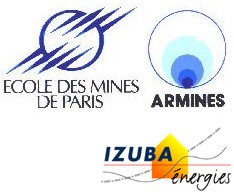 |

Performs yearly simulations of a building life cycle, in order to provide mechanical, energy and architectural engineers or architects with environmental indicators (e.g., global warming, acidification and eutrophication potentials, and exhaust of natural resources). The Swiss Oekoinventare database and other data collected in the European REGENER project are used for material fabrication and other processes (energy, water, waste, transport). EQUER is linked to the energy simulation tool COMFIE. Replacement of components at the end of their life is automatically accounted for.
Screen Shots
Keywords
life cycle assessment, design, retrofit, residential and commercial buildings, simulation
Validation/Testing
Inter-comparison and benchmarking of LCA-based environmental assessment and design tools, PRESCO European thematic network, 2004, report available to users.
Expertise Required
High level of computer literacy not required.
Users
10
Audience
Mechanical, energy, and architectural engineers working for architect/engineer firms, architects, consulting firms, utilities, federal agencies, urban designers, universities, and research laboratories.
Input
Building geometry, material characteristics, internal loads and schedules, climate, heating and cooling equipment characteristics. Water consumption, waste generation and transport issues may be taken into account, depending on the goal of the study. Readable, structured input file should be generated by PLEIADES user interface and ALCYONE 2-3D modeller (PC Windows).
Output
Formatted result (spreadsheet compatible tables and graphs), 12 environmental indicators (greenhouse gases, primary energy and water consumption, waste etc.).
Computer Platform
PC, Windows 95/98/ME/NT/2000/XP
Programming Language
Pascal
Strengths
Links with an energy simulation tool and a user friendly interface (PLEIADES) allows a more global assessment. Life cycle simulation reduces the risk of errors when taking renovation into account. Focusing on the envelope allows for use by architects.
Weaknesses
Equipment is modelled very simply (maximum power, set point, position of the thermostat in the building). Impacts from heating equipment fabrication is included in the inventory of 1 kWh heating.
Contact
Availability
Software price is approximately $1000 for new installations. This package contains the executable, French weather files as well as documentation (all on CD ROM). Contact the author or the editor for additional information.
Editor:
IZUBA Energies
5, rue des Salins
34140 M�ze
France
Tel: +33 (4) 67 18 77 02
Fax: +33 (4) 67 43 01 24
e-mail: contact@izuba.fr
Web: http://www.izuba.fr/
|

